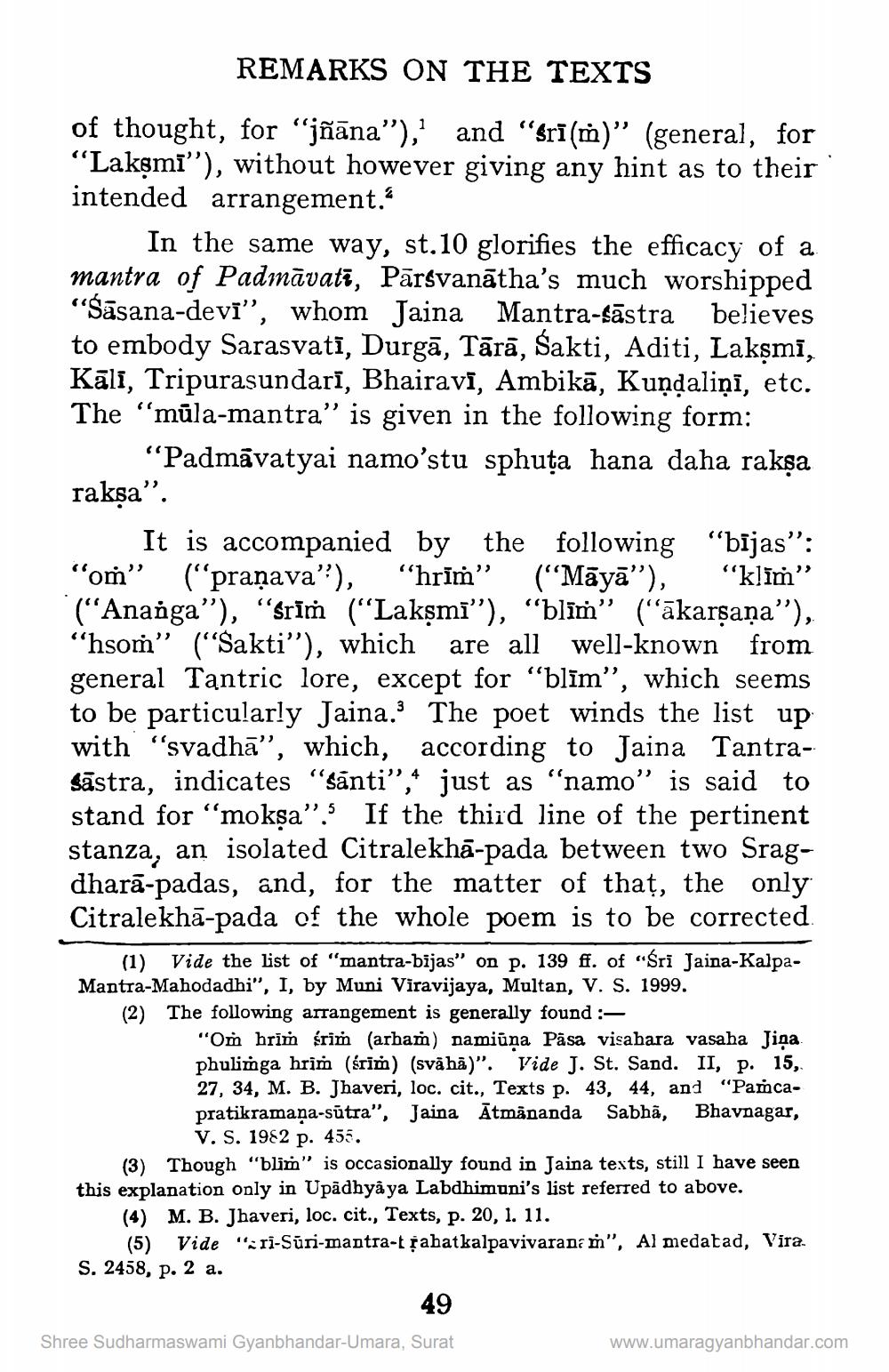________________
REMARKS ON THE TEXTS of thought, for "jñāna”), and "Srī (m)" (general, for "Laksmi"), without however giving any hint as to their intended arrangement.
In the same way, st. 10 glorifies the efficacy of a mantra of Padmavati, Pārsvanātha's much worshipped "Śāsana-devī”, whom Jaina Mantra-sāstra believes to embody Sarasvatī, Durgā, Tārā, Sakti, Aditi, Laksmī, Kāli, Tripurasundari, Bhairavī, Ambikā, Kundaliņī, etc. The "mūla-mantra” is given in the following form:
“Padmāvatyai namo'stu sphuta hana daha raksa rakşa”.
It is accompanied by the following “bijas”: "om" (''praṇava), "hrīm" ("Māyā”), “klīm” ("Ananga"), "Srī (“'Lakşmi”), “blīm” (“ākarşaņa"), “hsom” (“Sakti”), which are all well-known from general Tantric lore, except for “blīm”, which seems to be particularly Jaina. The poet winds the list up with "svadhā”, which, according to Jaina Tantrasāstra, indicates "Sānti”, just as "namo" is said to stand for “mokşa”. If the third line of the pertinent stanza, an isolated Citralekhā-pada between two Sragdharā-padas, and, for the matter of that, the only Citralekhā-pada of the whole poem is to be corrected
(1) Vide the list of "mantra-bijas” on p. 139 ff. of "Śri Jaina-KalpaMantra-Mahodadhi", I, by Muni Viravijaya, Multan, V. S. 1999. (2) The following arrangement is generally found :
"Om hrim srim (arham) namiūna Păsa visabara vasaha Jiga phulimga hrim (śrīm) (svāhā)". Vide J. St. Sand. II, p. 15, 27, 34, M. B. Jhaveri, loc. cit., Texts p. 43, 44, and "Pancapratikramana-sūtra", Jaina Ātmananda Sabhā, Bhavnagar,
V. S. 1982 p. 453. (3) Though "blīm" is occasionally found in Jaina tests, still I have seen this explanation only in Upadhyâya Labdhimuni's list referred to above.
(4) M. B. Jhaveri, loc. cit., Texts, p. 20, 1. 11.
(5) Vide ri-Sūri-mantra-trabatkalpavivaranai", Almedabad, Vira. S. 2458, p. 2 a.
49
Shree Sudharmaswami Gyanbhandar-Umara, Surat
www.umaragyanbhandar.com




